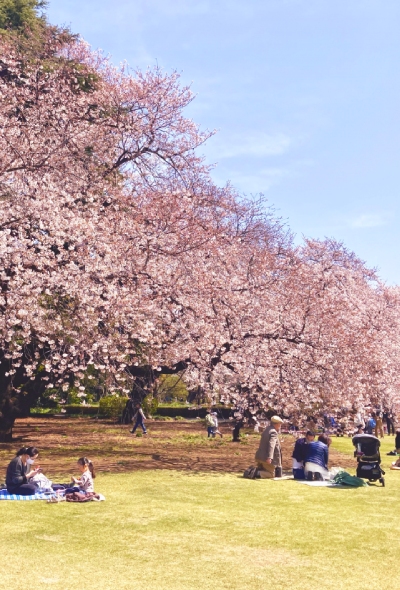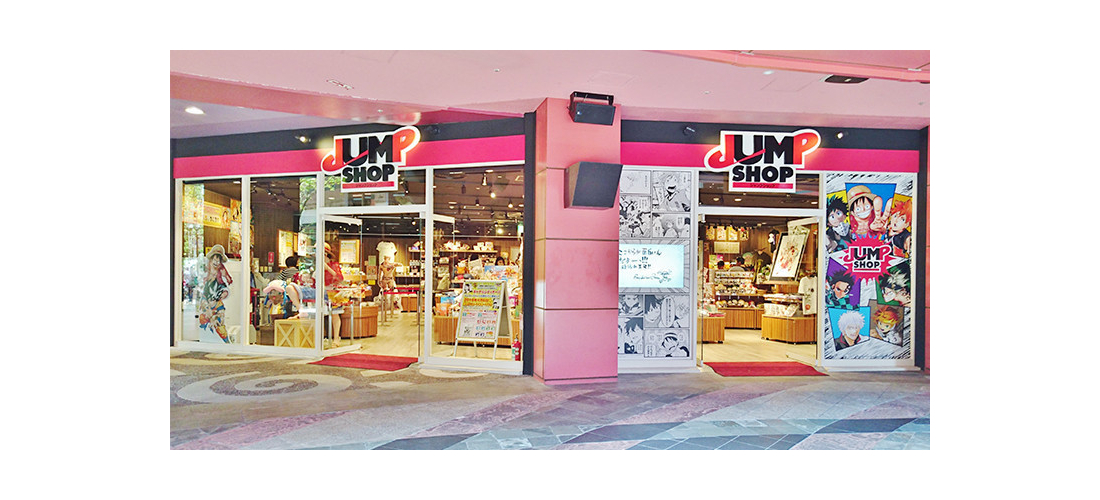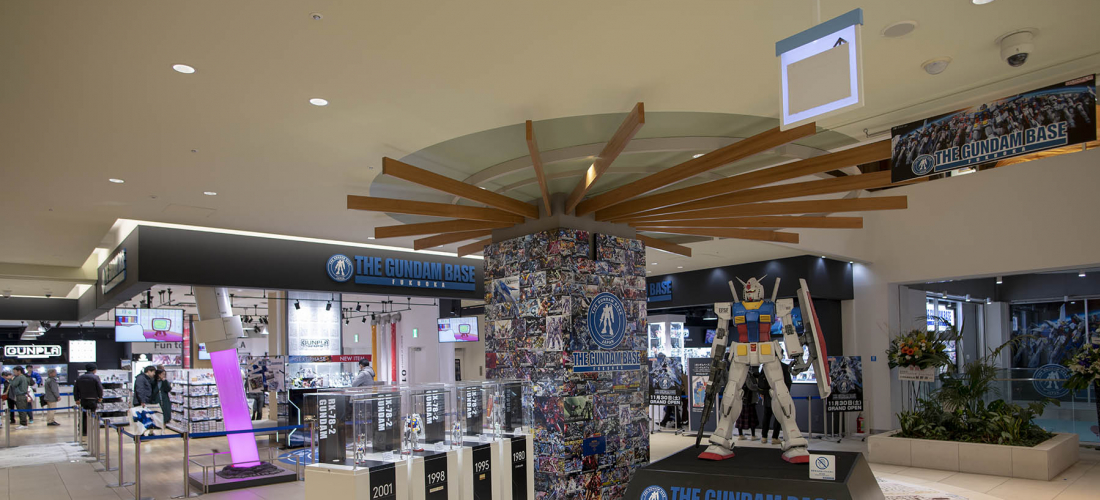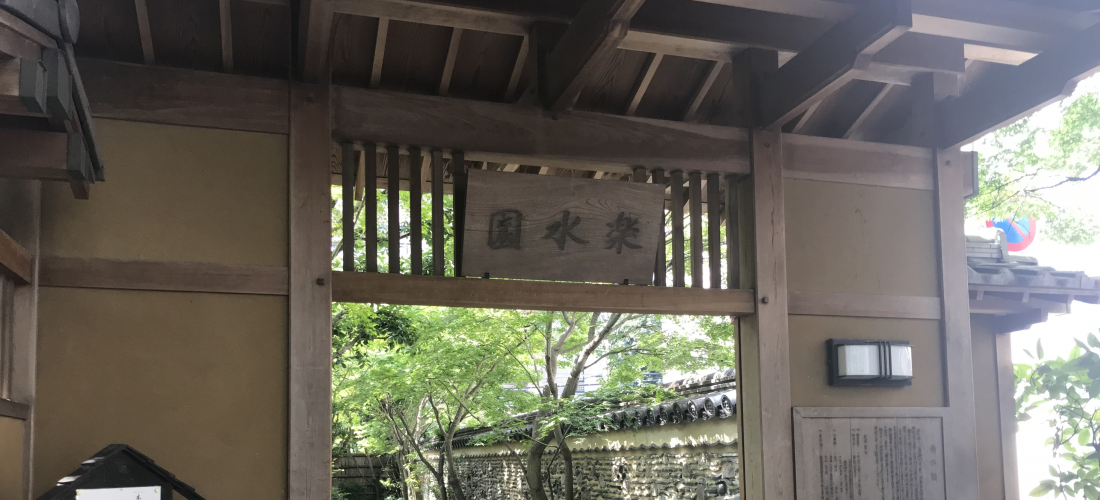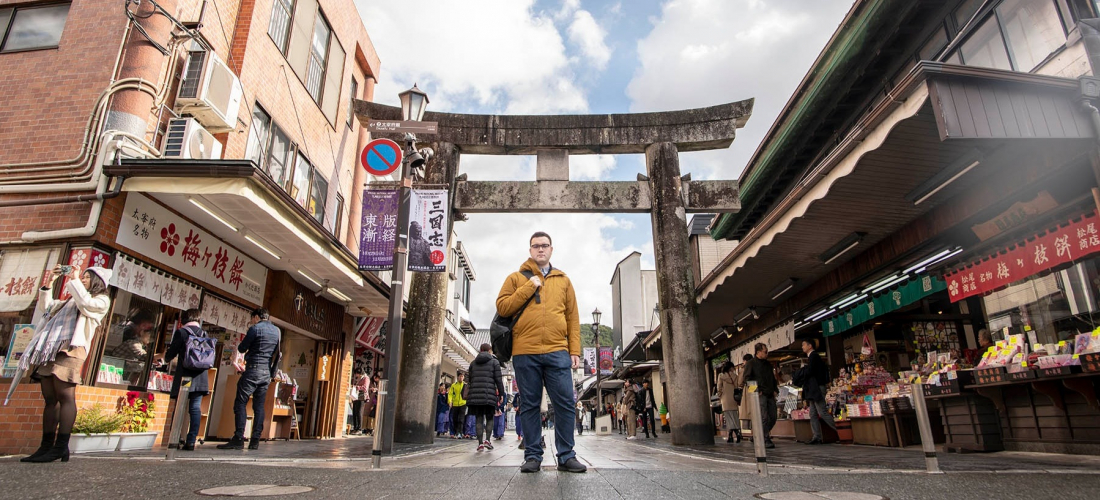
Get Glasses in Fukuoka & See the City From Day to Night With a JINS Night Walk
Planning a trip to Fukuoka? We've put together a new guide to both Fukuoka sightseeing and Fukuoka eyewear shopping with the help of Japanese glasses brand JINS. Check out our Fukuoka recommendations for food, fun, and fashion!
CONTENTS
Glasses Shopping in Fukuoka



For hundreds of years Japan’s southern island of Kyushu has welcomed foreign visitors to Japan. Even now in the 21st century, Fukuoka (Kyushu’s biggest city) attracts travelers from all over the world with its reputation as a destination for flavorful street food, Japanese history, legendary Shinto shrines, and unparalleled shopping. As a major city with all of Japan’s most popular shops and brands, but significantly lighter crowds and a much more relaxed vibe than Tokyo or Osaka, Fukuoka might be the best choice for travelers who want to shop in Japan.
So this summer the Japankuru team paid a visit to the heart of Fukuoka’s busy city center to see the JINS at Mina Tenjin mall, and after checking out the shop’s wide selection and unhurried atmosphere, we might just have found the best place to buy glasses in Fukuoka. JINS is known as a leading brand in the world of Japanese glasses, and Fukuoka is known for everything from excellent shopping to outstanding ramen, so we had a blast putting together a trip packed with food, fun, and a little glasses shopping in Fukuoka – and we think you will too.
A JINS 30min Night Walk in Fukuoka

In Japan’s busiest cities it’s never hard to fill the day with a packed itinerary, but sometimes it’s not so obvious how to make the most of your travel time once the sun begins to set. What does Fukuoka have to offer after dark? Well, JINS offers some ideas as a part of their “30min Night Walk” campaign. Many of JINS’ biggest city-center shops are open late until 8 pm for nighttime shoppers, and since they can often prepare your new glasses in as little as 30 minutes, that leaves you with just enough time for a little evening sightseeing. The JINS 30min Night Walk homepage includes a selection of do-it-yourself tours centered around JINS locations around Japan, and tax-free shoppers even get a cute illustrated lens cloth “Night Voucher” that acts as a coupon for discounts and freebies at other nearby shops and restaurants. So when the Japankuru team visited JINS Mina Tenjin in the heart of Fukuoka, we decided to dream up some Fukuoka Night Walks of our own design as well. Read on for tips on finding the perfect Japanese glasses in Fukuoka, plus a couple of our favorite ways to see the city after sunset!
First Stop: JINS Mina Tenjin



Tenjin is Fukuoka’s trendiest neighborhood, located in the center of the city among the rivers and canals that lead to Fukuoka’s port, and packed full of shops selling Japan’s latest fashions or dishing up the latest gourmet crazes. And next to Tenjin Station, located on the bright and airy ground floor of the Mina Tenjin Mall, you’ll find the Japanese glasses you’ve been looking for at JINS Mina Tenjin. This spacious JINS flagship feels fresh and modern despite being decorated with ceramic tiles inspired by Fukuoka’s traditional pottery, and there are references to local culture all over the shop, from the counters to the bright mural on the wall. With all of the most popular JINS glasses and lenses on display, ample facilities to smooth out the process, and even a stylish in-store cafe, we think JINS Mina Tenjin is probably the most pleasant place to buy glasses in Fukuoka.
JINS Mina Tenjin (JINSミーナ天神店)
4-3-8 Tenjin, Chuo Ward, Fukuoka
Hours: 10:00 – 20:00
Official Website (jp)
This Year’s Most Popular Frames



Glasses trends at JINS have gone in two opposite directions this summer: big and bold, or simple and sleek. If you want to make a statement with your eyewear, then you’ll want to try on some frames from the BE BOLD collection, which are extra thick and sturdy, in colors like matte black and brown tortoiseshell. If you love wearing glasses and want to show them off, these are for you. For a more subtle effect, wire and metal frames are always in style, and the chic shapes of the Combination Titanium line use high-quality titanium for a sophisticated look.
If you’re less worried about how the frames look on your face, and more interested in how your face looks with the frames, then take a look at their “glasses that won’t make your eyes look small” (目が小さくならないメガネ). These frames are carefully designed to diminish the eye-shrinking effect that strong lenses sometimes create!



Fortunately, comfort is always in style, and JINS offers a wide variety of frames made to keep you as comfortable as possible. The JINS HOME line is stylish enough to be worn out of the house, but features like silicone nose pads and strong, flexible, rounded frames make them perfect for lounging around at home. The JINS Airframe technology is now used in many of their glasses lines as well, due to the frames’ impressive flexibility (some are even hingeless) and lightweight construction! These glasses are light enough that you can wear them on the long flight home without the frames bothering you. If you’re worried about losing your new glasses during the hustle and bustle of travel, their Quick Fit frames might be a better choice. Made with adjustable temple tips, these frames hold onto your ears even when you’re running and playing sports, so they’re not going anywhere!

If the most important thing for you is to find glasses that fit your face perfectly, then you might want to try the AI tablet system they call JINS BRAIN! Regardless of recent trends, the system analyzes your face to recommend the frames that suit you best, chosen from throughout the entire JINS collection. It can also analyze your face with a pair of glasses on, producing a percentage to show how well they match your look! With AI on your side, it’s easy to feel confident in your new glasses.
New Lenses for the Perfect Glasses


Frame design might be a matter of taste, but JINS’ use of cutting-edge Japanese lens innovation is likely to appeal to any glasses wearer, and they’re always coming up with new ideas in the name of convenience – and fashion. Their blue light cut lenses are a constant favorite, cutting down on the bright light from screens, especially the JINS Screen for Sleep glasses that come ready in comfortable frames for home wear. To protect your eyes from sunlight instead, JINS also offers photochromic lenses that transition to a darker shade when hit with sunlight. These come in two varieties: lenses that only darken into sunglasses outside when hit with UV light, and lenses that darken in any visible light – perfect for blocking strong sunbeams when driving.



For a more fashion-forward lens choice, the tinted “color lenses” come in a truly impressive range of colors at JINS, from pale peach to deep blues and reds. If you want to customize the perfect pair of prescription sunglasses, this is the place to do it, but in Japan it’s also trendy to add a slight tint to your everyday glasses – just adding a little color to everyday life! There’s a whole selection of light colors that are quite practical for that purpose, and your eyes might thank you for the little bit of extra shade.
The huge variety of lenses ready and in stock at JINS Mina Tenjin is a big part of why they can offer such short wait times, even on glasses made with less standard lenses, like some of their tinted color lenses. If you want to get all the add-ons, then you’ll probably want to go glasses shopping as early in your trip as possible to give them a few days to order in the lenses, but you might be surprised at what JINS can accomplish in under an hour!
The JINS Glasses Experience



Once you’ve done the hard work of picking out your favorite new frames, and decided which lenses best suit your needs, it’s smooth sailing. You can start the purchase process by using the automated tablet (which includes multilingual support) to fill out your basic information. Next, there are a few options: share your latest prescription information, have JINS check your current glasses (to make your new lenses the same), or have your vision tested on one of the machines in-store (they have a few of them so you don’t have to wait long). If you have contacts in, they even have a little contact lens area with a sink, mirror, cases, and solution, so getting your vision tested is no big deal.



Once the staff have all the information they need to make your new glasses, all that’s left is for you to choose your favorite case color and design, and then pay. At JINS Mina Tenjin you can show your passport to shop tax-free and save 10%, but for the very best deal, you’ll also want to show the Japankuru JINS coupon, to save an additional 5%! (JINS is already known for their affordable glasses, but between these discounts and the current weak yen, it’s a pretty unbelievable deal.) The JINS staff will hand you your QR code pickup slip and your Night Voucher before getting started ASAP so that your glasses will be ready in as little as 30 minutes, which means it’s time to head out on a Fukuoka Night Walk!
Next Stop: See Fukuoka After Dark
Fukuoka Night Walk ① Cafes & Relaxation



Fukuoka has a thriving cafe scene, and many of these laid-back little shops are open into the evening, so a Night Walk tour of Fukuoka’s cafes is the best way to see the city at its most relaxed. In Japan, going on a “cafe meguri” (カフェ巡り, cafe tour) is a pretty popular hobby, but for a truly low-key adventure, you don’t even have to leave JINS. JINS Mina Tenjin shares a space with Onca Coffee, a coffee shop that custom-roasts its beans for a complex flavor that perfectly complements an extremely simple menu. Onca Coffee basically offers two options: kuro (black: an americano) or siro (white: a latte). If you want to keep things simple, ordering a “kuro” cup of coffee and flipping through one of the books at Onca is a great way to take a little break during a busy day of travel!
Onca Coffee (オンカコーヒー ミーナ天神店)
Mina Tenjin 1F, 4-3-8 Tenjin, Chuo Ward, Fukuoka
Hours: weekdays 7:00 – 20:00 | weekends 10:00 – 20:00
Official Website (jp)



If the weather’s nice and you’re ready to see a little more of Fukuoka, a quick walk will bring you to Kego Shrine, which was established in its current location in 1608. The shrine has had the same torii gate since the mid-1600s, and the main hall is built in the simple, elegant style of classic Edo era (1603-1868) architecture. For visitors looking for relaxation, however, the real highlights are nestled into a shady corner of the shrine grounds. Kego Shrine is known for its mineral water, which flows out of a majestic dragon-shaped tap, and is also used for a small public foot bath! Head into the little hut and soak away the fatigue of a busy day shopping in Fukuoka. When your coffee cravings call for another cup, there’s even a Blue Bottle Coffee on the shrine grounds, with big windows for admiring the shrine as you sip.
Kego Shrine (警固神社)
2-2-20 Tenjin, Chuo Ward, Fukuoka
Shrine Office Hours: 6:30 – 18:00
Blue Bottle Coffee Hours: 8:00 – 20:00
Official Website (jp)



For a little local flavor, our third cup of coffee (or perhaps a nice chai) comes from Rec Coffee, a Fukuoka shop with a chic minimalist interior, smiley staff, and excellent baked goods (we recommend the pear tart). Rec Coffee’s first location was established in the nearby neighborhood of Hakata, and the combination of excellent coffee and friendly charm has helped the shop to grow to half a dozen locations in Fukuoka, and a handful more in Tokyo and Taiwan! Since Rec Coffee is open late into the night, just make sure you don’t stay too long and miss your glasses pickup time at JINS.
Rec Coffee Tenjinminami (天神南店)
5−1−19, Watanabedori, Chuo Ward, Fukuoka
Hours: 11:00 – 22:00 (extended hours Fri~Sun)
Official Website (jp)

On the walk back to get your glasses, you can even stroll across the green lawn of Tenjin Central Park for a refreshing breath of grassy air, and a view of the impressive architecture of Acros Fukuoka and the Fukuoka Symphony Hall.
Fukuoka Night Walk ② Food & Fukuoka Culture



If you took your time choosing glasses and you’re leaving JINS with a hungry stomach, then it’s time to do as the Fukuokans do – eat a big bowl of ramen! Fukuoka is famous for rich, umami-packed tonkotsu (pork bone) broth ramen, but there’s another fun umami-filled option in the area too. For this Night Walk, we headed straight to Sanmi (333), a nearby ramen shop known for its beautiful bright red tomato ramen! Instead of soy sauce or pork bones, this ramen broth incorporates the fresh flavor of a ripe tomato, with optional toppings like cheese or stewed spinach and fennel, for a totally different taste from what you’d get at most local Fukuoka shops.
The original Sanmi shop is a walkable distance from JINS Mina Tenjin, but we recommend you go to their central Tenjin Daimyo location instead. Not only is it closer, but you can show your Night Voucher to staff at this location when you order for a free bowl of tomato-cheese risotto, made with the leftover soup with your ramen! (Eat the noodles and toppings, then call the waiter so they can take your soup and bring back a bowl of risotto.)
Sanmi Tomato Ramen Central Tenjin Daimyo (元祖トマトラーメン三味 天神大名中心店)
Passage Bldg 2F, 1-12-58 Daimyo, Chuo Ward, Fukuoka
Hours: open 24/7
Official Website (jp)



Rain or shine, our next stop is both a convenient way to get across the Tenjin area, and a nice place to get some shopping done. The Tenjin Underground Mall cuts through the underground terrain of the Tenjin area, running all the way from Mina Tenjin (where JINS is located) past Tenjin Station and down to Tenjin-minami Station. The total length is well over 500m (about 1/3 of a mile) and it’s not only lined all the way with a variety of different shops, but also decorated with art and stained glass, paved with quaint cobblestones underfoot. After visiting JINS you can cross glasses off your shopping list, but what about souvenirs? Snacks, clothes, cosmetics? Whatever you’re looking for, this is a good place to find it, and some of the shops (including Ohga Pharmacy) even offer freebies for customers with the JINS Night Voucher.
Tenjin Underground Mall (天神地下街)
2 Tenjin, Chuo Ward, Fukuoka
Hours: 10:00 – 20:00
Official Website (jp)


Ready for a taste of Japanese street food? Fukuoka is famous for its food stalls, and the most iconic row of these, generally dubbed the “Nakasu Yatai” (中洲屋台) can be found nearby, along the banks of the Naka River. Many of these stalls, complete with counters and tall stools for a quick sit-down meal, serve the rich tonkotsu ramen that Fukuoka is known for, but we recommend finding one of the stalls that serve oden instead. This classic Japanese dish consists of large chunks of daikon radish, fish cakes, and whatever other items the chef chooses, all simmered in a light savory broth for a comforting flavor that tastes like Japanese home cooking. Even if you’re still full of ramen, you can order oden a few pieces at a time, so it’s a nice snack – especially when paired with an ice-cold beer. Stop by after sunset and grab a seat amongst the busy rush of people to enjoy the riverside ambience!
Nakasu Yatai (中洲屋台)
1-8 Nakasu, Hakata Ward, Fukuoka
Hours: around 18:00 – 01:00 (hours vary by stall)



This next stop is for history lovers looking to enjoy Fukuoka to the fullest, even late into the evening. Walk north along the Naka riverside, enjoy the festive atmosphere, and eventually you’ll find yourself facing the Fukuoka City Akarenga Cultural Center. This eye-catching red brick building was designed by the same architect as Tokyo Station, and as an officially designated cultural property, many people stop by just to take a look at the imposing facade. If you’re interested, however, the inside is open as a free museum until 10 in the evening! The detailed English-language mobile guide (accessible via your phone) offers interesting insights into the building’s design, and a little look at Fukuoka as it was 100 years ago.
Fukuoka City Akarenga Cultural Center (福岡市赤煉瓦文化館)
1-15-30 Tenjin, Chuo Ward, Fukuoka
Hours: 9:00 – 22:00
Official Website (jp)
End Your Evening in Fukuoka with New JINS Glasses



Whether you decided to pass the time by relaxing in Fukuoka’s coffee shops, filling up on ramen and oden, or just taking a stroll to see a little more of the city, after enjoying your night walk it’s time to head back to JINS to pick up your new glasses. Just pop into the shop at Mina Tenjin and scan your QR code to grab your glasses from the locker, and you’re ready to go. Head out into Fukuoka with your new JINS glasses to see the city through new eyes!
For more info and updates from Japan, check Japankuru for new articles, and don’t forget to follow us on X (Twitter), Instagram, and Facebook!





 >> Find out more at Japankuru.com! (link in bio)
#
>> Find out more at Japankuru.com! (link in bio)
#





 The Robot Restaurant is gone, but the Samurai Restaurant is here to take its place. Check it out, and don't forget your coupon!
The Robot Restaurant is gone, but the Samurai Restaurant is here to take its place. Check it out, and don't forget your coupon!
 신주쿠의 명소 로봇 레스토랑이 사무라이 레스토랑으로 부활! 절찬 쿠폰 발급중
신주쿠의 명소 로봇 레스토랑이 사무라이 레스토랑으로 부활! 절찬 쿠폰 발급중
 18歲以上才能入場的歌舞秀,和你想的不一樣!拿好優惠券去看看~
#tokyo #shinjuku #samurairestaurant #robotrestaurant #tokyotrip #도쿄여행 #신주쿠 #사무라이레스토랑 #이색체험 #할인이벤트 #歌舞伎町 #東京景點 #武士餐廳 #日本表演 #日本文化體驗 #japankuru #japantrip #japantravel #japanlovers #japan_of_insta
18歲以上才能入場的歌舞秀,和你想的不一樣!拿好優惠券去看看~
#tokyo #shinjuku #samurairestaurant #robotrestaurant #tokyotrip #도쿄여행 #신주쿠 #사무라이레스토랑 #이색체험 #할인이벤트 #歌舞伎町 #東京景點 #武士餐廳 #日本表演 #日本文化體驗 #japankuru #japantrip #japantravel #japanlovers #japan_of_insta
 코지마 x 빅 카메라 쿠폰으로 일본 가전 제품 쇼핑하기
#pr #japankuru #japanshopping #kojima #biccamera #japaneseskincare #yaman #dji #osmopocket3 #skincaredevice #日本購物 #美容儀 #相機 #雅萌 #日本家電 #일본여행 #면세 #여행꿀팁 #일본쇼핑리스트 #쿠폰 #일본쇼핑 #일본브랜드 #할인 #코지마 #빅카메라 #japankurucoupon
코지마 x 빅 카메라 쿠폰으로 일본 가전 제품 쇼핑하기
#pr #japankuru #japanshopping #kojima #biccamera #japaneseskincare #yaman #dji #osmopocket3 #skincaredevice #日本購物 #美容儀 #相機 #雅萌 #日本家電 #일본여행 #면세 #여행꿀팁 #일본쇼핑리스트 #쿠폰 #일본쇼핑 #일본브랜드 #할인 #코지마 #빅카메라 #japankurucoupon







































